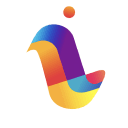“Teamwork makes the dream work,” we‘ve all heard this saying somewhere before. But the difference between hearing this and getting it down right is the same as between hearing an instrument and playing it. And when you have many team members, you really gotta get your team, collaboration process down right.
But surprisingly, a lot of team leaders, managers, and C-level executives still do not know how to create strong bonds within their teams. Recent studies by McKinsey and Gartner show that navigating work lines between in-officer, hybrid, and remote leaves many teams out of sorts. This lack of sync is adding to the already highly disengaged workforce, as per Gallup.
The answer is clear, there is a need to change up how team collaboration and employee engagement work. Rather than spending money on expensive and ineffective DEI, team development, and employee assessment tasks, the need is for organic employee engagement. This method involves using employee engagement tactics like virtual coffee chat, watercooler sessions, AI-supported mentorship, etc.
Here are some of the key team collaboration errors these employee engagement tactics can help you fix:
In a rush? Don’t worry, get the perfect gist of this blog right here and boost your team collaboration!
7 Team Collaboration Errors You Can Fix with Employee Engagement Tactics
No DEI Work
DEI in the workplace has been a mixed bag for many businesses across the world of late. Despite most leaders strongly asserting that they want more DEI activities, programs have failed to turn out a valid outcome for businesses. As a result, as this WSJ article mentions, leaders have been turning away from DEI work despite believing that there is a strong need for it to access markets globally.
The problem is not that DEI programs do not work, The problem lies in the foregrounding and approach taken to making DEI work. Using organic models for collaboration and interaction has proven more valuable than any other externally administered education program. This is particularly true for hybrid and remote teams that want to continue with DEI activities in the workplace but do not have the tech connection to do so.
The solution here is a simple one – organic employee engagement tactics like virtual coffee chats. Why does this work when expensive DEI coaching does not? Nothing ever beats honest F2F communication, particularly when you want to build culturally diverse bonds. Of course, using DEI mentorship to spruce up organic interactions is also a good idea but correcting this team collaboration error via organic activity is a primary concern for teams and should be given priority.


Limited Interpersonal Interactions
Team collaboration, especially among hybrid and remote teams hinges on how all team members know each other. This is not so easily handled when the team is large or is separated by culturally diverse lines. But forcing people together through a manually handled virtual coffee chat program often does not work people feel that they are being forced into things.
This is why apps like LEAD.bot utilize random pairing while also adding the sophistication of AI to the mix. The key here is understanding the profile pairings of participants and enabling people to align with people they have similarities with. This is a great way to keep things organic and natural while also fostering a great degree of collaboration potential among team members.
Once you have a virtual coffee chat program going for some time and there is enough data substantiation available, companies can opt for more sophisticated pairings. Such peer collaboration sessions often create mentorship opportunities or work collaboration options that are highly profitable. A recent McKinsey blog mentions that individuals in businesses often do not get the executive backing needed to actualize high-risk but high-reward opportunities. Virtual coffee chats can offer such options often and tapping into their potential is a good idea for managers and leaders.
Rigid Collaboration Structuring
Team collaboration and efficiency is a matter of streamlining processes and syncing up with team members. This is often done by strictly defining processes and creating consistent results from ongoing operations. However, the downside of this process is that its participants can get very removed from one another. This leads to an erosion of professional synergy and creates dissonance over time. The way to counter this is to create a virtual coffee chat program that can bring people back together into interpersonal communication.
This is one of the biggest benefits of creating dynamic collaboration campaigns. They help in creating familiarity that enables employees to work better with each other. In many cases, they may also help in developing personalized mentorship or project development opportunities. But most important of all is that it is a very good way to improve employee engagement while ensuring the workflow remains undisturbed. Most virtual coffee chats are 15 to 30 minutes `and happen once a week to once a fortnight or month.
No Soft Skill Development
According to Deloitte insights, “A soft skills importance report also found that employers’ most preferred soft skills included communication skills, customer service, scheduling, time management, project management, analytical thinking, the ability to work independently, and flexibility.” Utilizing soft skills development programs is usually a good idea if your team is going to work remotely. However, soft skills not applied in any way do not produce the required outcome. The best way to put soft skills into play is through social interactions. Here, both virtual coffee chats and water cooler moments come into play and provide opportunities for social interaction. Employees can use soft skills here and develop a better understanding of each other’s processes.


Further, developing soft skills enables those with limited social capacity but high-value-producing skills to express themselves more openly. This enables them to contribute better and network with others for better outreach and collaboration. This process can help identify people with strong talent who otherwise may not be able to make a mark otherwise. This helps them emerge in the team and possibly also take on bigger roles later, maybe even in managerial capacities.
No Casual Team Bonding
Team bonding without the pressure of work and performance helps create a sense of belongingness in groups. This brings out a more lighthearted and casual side to your team and may help them collaborate more open-mindedly on creative projects. Also, making a personal investment in the lives of colleagues helps workers develop social capital. This is crucial for developing brand loyalty and creating social capital. Beyond incentives and work quality, brand loyalty is based on a worker’s sense of belonging so developing this facet of your team may offer considerable benefits to your company.
Another benefit of casual bonding comes from understanding personalities individually. In many cases, groups like “quiet contributors” are not easy to spot without getting to know them personally. Generally speaking, they need to have some kind of buddy system or team support structure to bring out their best. Casual team bonding via watercooler sessions enables people to explore possibilities like these and get to know each other. This often leads to the possibility of mentorship programs or collaboration opportunities that managers may not see otherwise.
Tired of Reading! We got you all the big highlights on this video right here! Thanks us later!
No Personal Milestone Celebrations
Personal milestones matter a lot to employees and bringing them up to be noticed is a vital part of employee experience. They not only reward healthy growth with positive reinforcement but also encourage healthy competition among peers and colleagues. Further, this is a good way to bring the team together and take their opinions on events. Something relating to the project where the person had a great performance might reveal project improvement areas. This is a good way to spur for higher growth and create ongoing value generation.
Moreover, rewards and recognition celebrated as milestones help create social equity, and develop a sense of belonging. This helps the team develop a greater sense of bonding and also ensures that they can look forward to such recognition if they perform well. This is crucial for maintaining motivation levels and enabling your team to have a sense of momentum towards higher margins. Studies have shown that career growth prospects are one of the most important factors for employees.
No Mentorship Support
Mentorship programs are among the most important indicators of growth in business. All Fortune 500 companies pursue a very well-defined mentorship program that enables them to actualize their career prospects. This is a great way to make good on existing workforce talent pools. They need to know that you will support their ambitions to deliver their best every quarter. All of this can start with a virtual coffee chat where your colleagues can speak about their ambitions and also enable you to understand their perspectives on the team’s performance.
With the right kind of mentorship support, teams can turn from mixed performances to high-end outcome results, Mentorship support leads to better interactions, more employee satisfaction, and overall better performance with sustainable future prospects. If you have not been working in a strong mentorship program then start now!
How Will You Fix Team Collaboration Issues We Have Mentioned Above?
Team collaboration is a vital point of consideration for most businesses. As a manager or team leader, you must consider how the factors we have mentioned are impacting your overall work performance. Using an employee engagement app that helps you address them is a very valuable investment. And this is where LEAD.bot offers a lot of options with lots of diverse team collaboration and people analytics features.
LEAD.bot is a team engagement platform available on Slack and Teams. It is an all-in-one team development software with features like virtual coffee chats, buddy programs, birthday celebrations & work anniversary celebrations, new hire onboarding programs, and Pulse Surveys.
LEAD.bot also offers cutting-edge Organizational Network Analysis (ONA) for big enterprises and institutions. Executive to mid-level managers use ONA to gain highly actionable insights and build strong workplace connections. Using this app enables developing innovative employee engagement ideas to connect employees and foster better organizational health, employee retention, and overall performance with this simple app!
LEAD.bot is a product of LEAD.app and we also LEAD.bot’s sister app Sunrize which showcases workplace attendance by graphs right on Slack! Book a demo now!












